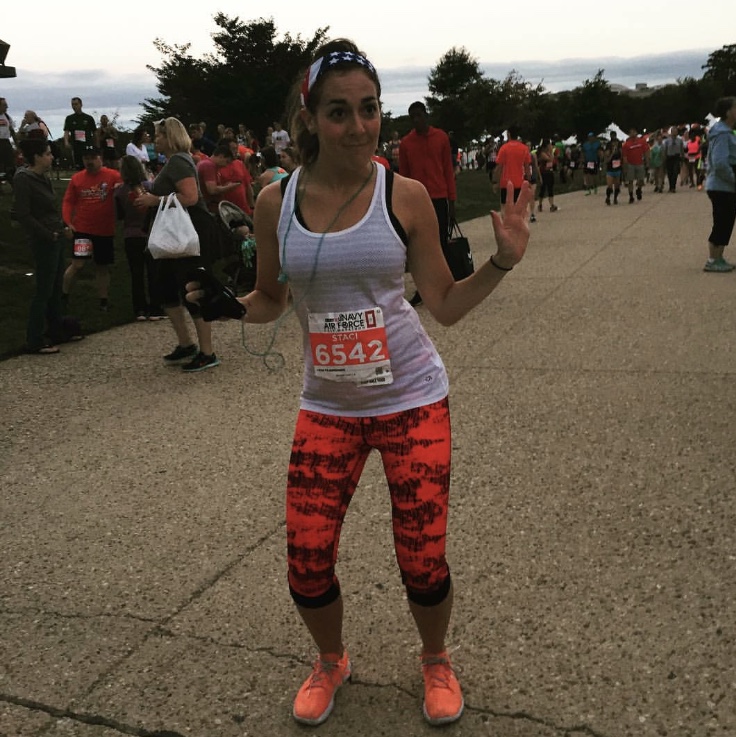Spoiler Alert: There's No Max on Medical Bullshit
Well, well, well. It’s been almost a year since I’ve written here, and I have no excuses beyond the fact that time is meaningless during this interminable pandemic. In fact, the time stamp here in Squarespace tells me I started this post on October 11, 2020.
What can I say? Things have been busy, but also…not.
Scott and I have yet to have our wedding, but we somewhat unexpectedly bought a house because we were among the fortunate ones who were able to save extra during said pandemic and take advantage of the low interest rates.
I didn’t write in this blog, but I did technically write a book-shaped thing about all my glorious medical traumas and am working on selling it. I’ve even let some people read it. (HEY ARE YOU A BOOK AGENT? REPRESENT ME!)
And while I had made great strides in 2020 in managing my endometriosis holistically, I also suffered a significant setback that fully changed the course of my healthcare management and planning.
October was the last time I published a full post on here, and it will also be the anniversary of my being diagnosed with my second deep vein thrombosis (DVT), a.k.a. a blood clot in my leg.
TL;DR, when I was 23, I had my first blood clot. I had none of the normal risk factors at the time — I was a never-smoker at a healthy body weight who had not been on a long flight. For all I knew back then, I was “healthy.” I had not yet been diagnosed with endo or Hashimoto’s thyroiditis or thyroid cancer. But I was on the birth control pill Yaz, so my doctors surmised that was it.
ACTUALLY, my GYN muttered under her breath that she didn’t think that was it, but everyone else agreed that was it, including the makers of Yaz who paid out millions in a class action lawsuit to people like me who suffered bodily injury as a result of taking this drug.
So I was told to ditch the hormones forever, take anticoagulants (commonly called blood thinners) for 6 months, and go along my merry way.
When I had my first surgery for endometriosis several years later, my symptoms didn’t recede, and my stumped GYN sent me to a hematologist “just to see” if I could go back on birth control pills. The hematologist would be able to run comprehensive blood work and tell us definitively if it was the Yaz or not.
“What is wrong with this picture?” you might be asking, feeling like something is off in this story but not quite sure what. Here is what:
Hematologists do not treat endometriosis.
Birth control does not treat endometriosis.
THAT’S RIGHT, NO ONE EVER DID A BLOOD WORKUP THE FIRST TIME I HAD A BLOOD CLOT.
After telling me I should *just* get pregnant to help “cure” my endometriosis, my hematologist ran what was apparently every test on my blood that could be run based on the number of vials the phlebotomist took (a lucky 13). The results showed a couple “slight” mutations in my blood proteins — nothing to be alarmed about, none of the known major predispositions to abnormal clotting — except when combined with crazy hormone imbalances. That didn’t mean much for me in my day to day; all it meant was that I could not indeed take hormonal birth control pills, and if and when I became pregnant, I’d need special monitoring and medications to prevent another DVT. I also had to take baby aspirin once a day.
My first DVT was traumatic, and for a long time I lived in fear of another. I whined about having to take heparin shots after my subsequent surgeries to prevent clots while I was immobile and recovering, and I DEFINITELY bitched about having to wear medical-grade compression stockings to fly long distances, but ultimately these were small prices to pay to not have to deal with a random ball of blood cells that could travel to my lungs any minute and potentially kill me. And eventually I stopped thinking much about it because it was a singular thing that happened in the past, not a chronic condition I was working overtime to manage. Plus, I had the prophylactic baby aspirin, I was more physically active than ever before, and I wasn’t on any hormonal medications.
Then last October, I woke up on a Friday morning and my right calf felt sore, the same leg that had the DVT so many years earlier. I brushed it off at first. I had gone for a great run the night before, and even though it felt good, I thought maybe I had tweaked a muscle without realizing it. As the day went on, it nagged at me more and more. I complained to Scott.
“I’m sure you’ve already thought about this,” he said, “but it couldn’t be another blood clot, right?”
“No,” I said, scoffing. I recited my reasons to believe that was unlikely. “I’m not on hormones, and I’m taking baby aspirin. Plus I ran last night, so my blood flow should be good”
Then I went into the bathroom to get a better look under the brighter light. There, on the inside of my lower leg, not far from the twisted, scarred veins damaged from my previous clot, was a faint, pink bump. It hurt to touch. I freaked out. Like REALLY freaked out. I could not go through this again, I sobbed to Scott, reliving the trauma of my first clot — wondering if I’d accidentally kill myself just by rolling over onto my leg the wrong way, bracing for burning shots of heparin to the belly, getting my blood tested every few weeks to make sure it wasn’t clotting too fast but also wasn’t clotting too slow.
I’ve hit my fucking quota, I wanted to scream. When I had filled out my health history for my thyroid surgery a few years before, I had more significant conditions, surgeries, and problems than my septuagenarian dad.
Of course there is no quota, no karmic rationing of health problems. So Saturday morning, I called my primary care doctor’s office first thing. She wasn’t there of course, so I called prepared. There was a radiology center nearby that was open until noon. I told the answering service woman I had a history of blood clots and I needed my doctor to give me a referral so I could go get an ultrasound on my leg done right away.
This was my preference; another thing I had told Scott the night before that I COULD NOT do was go to a hospital. When you have multiple chronic illnesses during a pandemic, including an autoimmune one, you want to stay away from emergency rooms. The person at the other end of the line put me on hold.
“She wants you to go to the ER,” she said, when she came back. “That way if you have a clot, they can treat you right away.”
I teared up in resignation, texted Scott who was at work with limited cell service, called my parents and told them not to come because I didn’t want them near the hospital either, and drove myself to Johns Hopkins.
If you’ve had the misfortune of having to sit in the emergency room waiting area of a major urban medical center, then you know it’s basically the worst. It’s like the having to go to the DMV but the wait is even longer, you’re usually crippled with physical pain and/or major anxiety, and there are often unpleasant sights and smells.
However, COVID weirdly improved the waiting room experience. For starters, I had an admission assessment literally right away. A nurse took my vital signs and asked what was going on, as well as the general COVID screener we’ve all come to know and hate. Then I only waited about 15 minutes in a long hallway with industrial-grade fans to improve the ventilation, my chair well over 6 ft away from the next patient before I was admitted to a room in the ER proper.
Next I spoke to a number of healthcare professionals in varying amounts of personal protective equipment. The resident had on what I can only describe as an astronaut helmet with a tube running down his back. The medical student had a face shield and a mask. The nurse had a mask and full-body gown. They listened to me tell them about my history and my symptoms and told me they’d order an ultrasound and a rapid COVID test; I didn’t have any COVID symptoms, but since clots are a known side effect of COVID, I guess they figured they’d be on the safe side.
And that’s when COVID absolutely worked against me. My “rapid” test turned into a 10-hour wait. I found out later that the resident did not tell the lab that it should be done stat. And they wouldn’t do the ultrasound until the COVID results came back.
Hard pass on 10 hours of this.
As the day wore on, my arm ached from the IV, my skin became irritated by the electrodes monitoring my heart rate, the bottom half of my face became greasy under my mask, my phone battery dwindled, and I finished my book…and a tampon that I forgot to bring a replacement for. I didn’t eat, and I couldn’t sleep. By the time Scott got off work and saw my text, he was bringing me a late sushi dinner (thankfully Hopkins began allowing one visitor per patient as COVID rates dropped) and I still had not been tested for the thing I was admitted into the ER for.
Finally, after the angel-saint nurses bullied the lab into finally running my COVID test, my results came back negative, and they wheeled me up to the imaging department for an ultrasound. The transducer was cold and painful as the tech passed it over the painful bump on my leg, which turned out to indeed be a clot — a superficial one (not dangerous, though more painful) — but underneath it in the deeper veins was another thrombosis.
When the medical student, whose shift began hours after I was admitted, gave me my diagnosis, I cried. This was the opposite of the news I wanted to hear! In fact, until I saw my vascular surgeon afterward, I questioned if the radiologist was even right. Could it be that the pain was caused by the superficial clot and that what they saw in the deep vein was only scar tissue from 12 years ago?
The answer was no. I had another clot. And it would throw me for a loop.
Now here’s the part where I break the fourth wall of blogging (I just made that up) and tell you that this post is getting too long (if you’re still reading, I’m sure you agree), so I’ve just decided to make this a multi-parter! Stay tuned for the next installment where I tell you how having a DVT in 2008 is different than having one in 2020! I’ll also tell you how multiple blood clots really fuck up caring for endometriosis!
WOW, that doesn’t sound gripping at all, but trust.
xo,
S


















